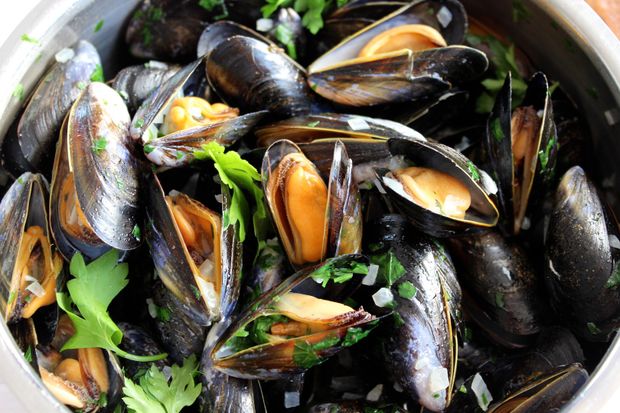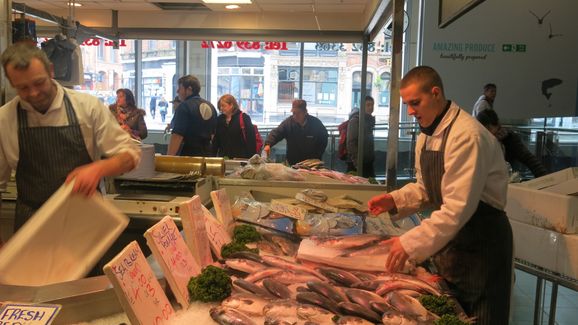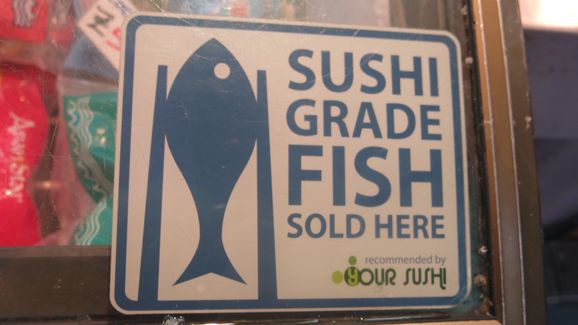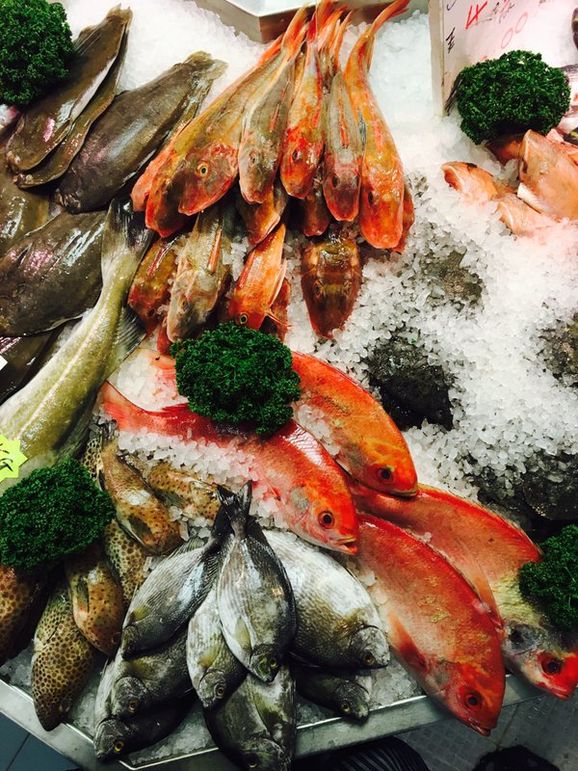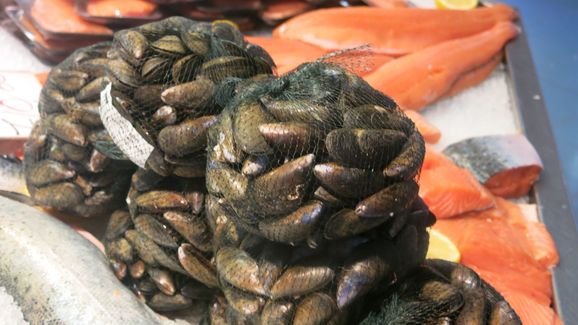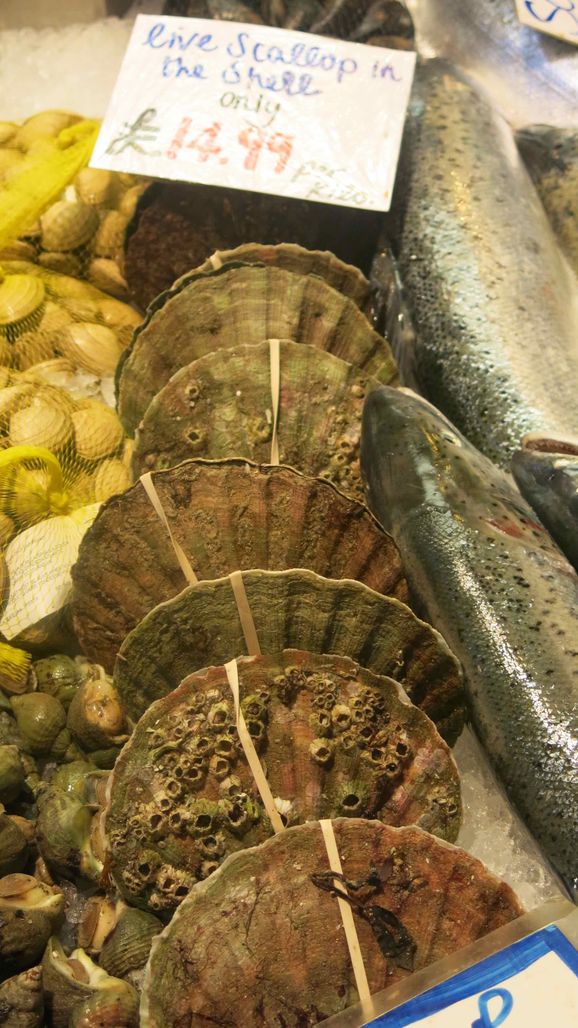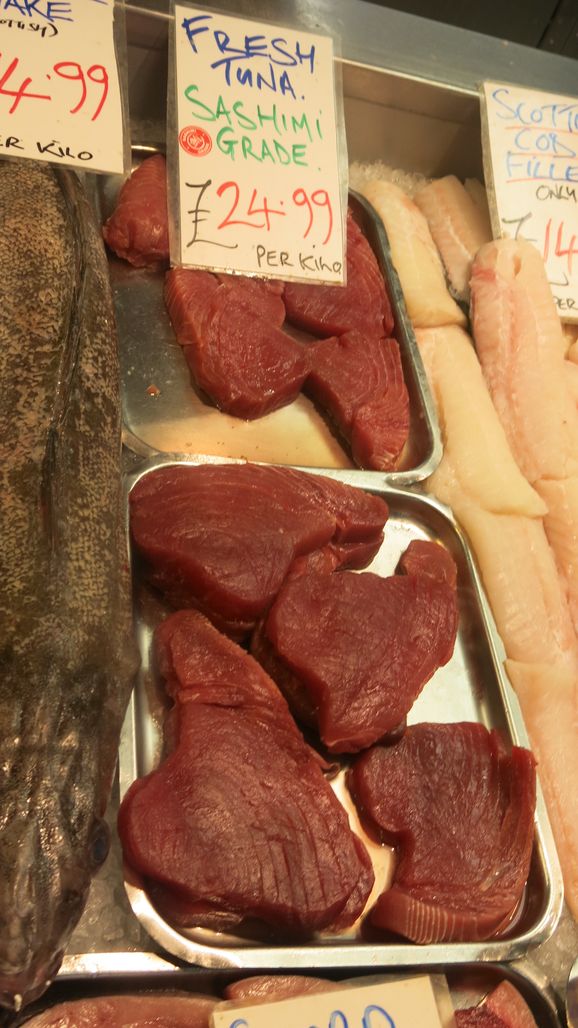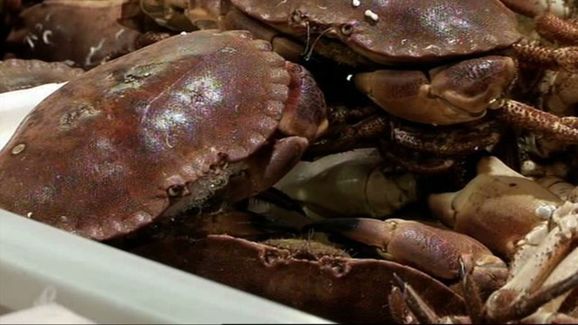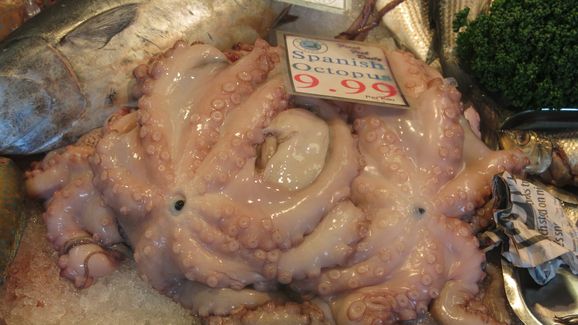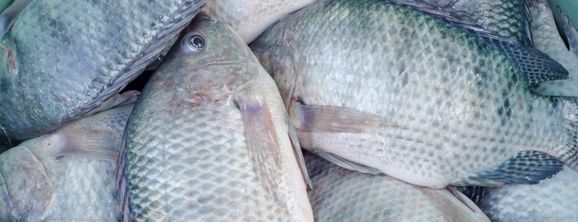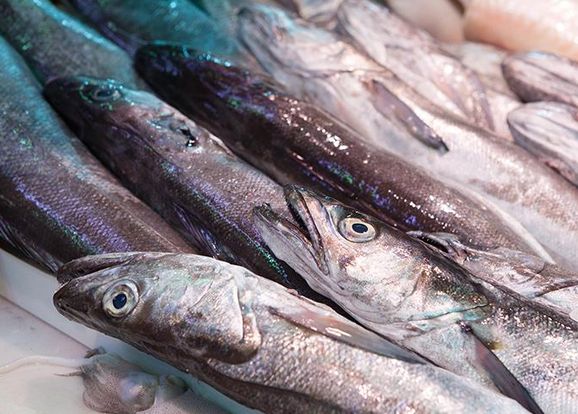EASTER means fish. And you thought it was all about Chocolate Eggs and Hot Cross Buns? No, the religious tradition remains that you choose seafood over meat on Good Friday, which is good news for fishmongers. In the build-up to the holiday sales of fish, particularly cod and salmon, leap by up to 20 per cent.
If you live anywhere near central Manchester then your essential destination will be the Arndale Food Market, where friendly rivals and neighbouring stalls Direct Fisheries and Whales Fish vie for trade. With fresh supplies arriving daily from Fleetwood, Cornwall and further afield you are spoilt for choice.
These days, of course, choice extends beyond seeking freshness through a bright eye and shining silvery scales in the specimens on the slab. You might aim for those fish rich in omega-3, which encourage a healthy heart... or, looking at the wider environmental picture, confine your purchases to sustainable species.
On sustainability there’s a lot of information out there. Check out the Marine Conservation Society’s Good Fish Guide, while the Marine Stewardship Council encourage their seafood partners to mark their produce with their blue MSC eco label. Threatened species are changing all the time. Atlantic cod is now reasonably re-stocked, while wild sea bass is in danger.
If this is all a bit too rigorous for you as a casual shopper, well there’s an advantage to patronising a proper fishmonger such as Direct Fisheries and Whales Fish, who will give you expert advice. Why, Direct Fisheries even have their own Twitter account @directfisherie1 where they alert you to their new fish on the block. Seasonality is important. Paul, who works at Whales, pointed out the cod roe on the stall. It’s only available in a two week window. Come Easter it would be gone.
With Easter imminent we’ve chosen eight simple dishes, each serving two, involving sustainable fish. Not cod or salmon – we are sure you’ve got your own recipes for those. The first four seafood ingredients were chosen from Direct Fisheries; the second four from Whales Fish. Just to be fair; don’t want to cause a splash!
DIRECT FISHERIES
RED GURNARD
Gurnard, along with pollock and whiting, is the poster fish of affordable sustainability – despite being ugly and bony! Buy it with fins and skin removed. Red gurnard is a fast growing fish and matures early at a large size. Avoid eating immature fish (less than 25 cm) and fresh fish caught during the summer spawning season. It’s not huge in flavour but absorbs strong flavours, as in this papillote (baked in parchment) dish, preserving the delicate flavours.
Gurnard en papillote
Ingredients
2 8oz gurnard fillets, skin on; 1 clove of garlic, sliced; ½ shallot, chopped; handful basil leaves; 3 pitted black olives, sliced; a splash of white wine; 3 sliced cherry tomatoes; 1tbsp olive oil; 1tbsp fish stock; salt and pepper.
Method
Pre-heat the oven at 350F. Place the garlic, shallot, basil, olives and tomato on the baking paper. Place the fish fillet on top with skin facing up. Splash with some olive oil and the fish stock, and season with salt and pepper and the wine. Carefully fold the fish in baking paper so all the sides are closed. Place this ‘package’ on an oven plate, which you place in the oven for 5-8 minutes, depending on the thickness of the fillets. Serve at table, unleashing the aromas from the parcel.
MUSSELS
These deep blue bivalves are to often taken for granted because they are cheap, but they are delicious, especially when served simply in the classic mariniere style (see recipe below). They are widely cultivated. Eat rope grown or hand-gathered mussels as these are more sustainable than those harvested by mechanical methods such as dredging. Mussel farming requires no feed inputs or chemicals therefore farming of mussels is an eco-friendly way of producing seafood. Moules Mariniere
Moules Mariniere
Ingredients
1.5kg mussels; 1 garlic clove; 2 shallots; 15g butter; bouquet garni of parlsey thyme and bay leaves; 100ml dry white wine; 120ml double cream; handful coarsely chopped parsley; crusty bread to serve.
Method
Wash the mussels under cold, running water. Discard any open ones that won't close when lightly squeezed. Pull out the tough, fibrous beards protruding from between the tightly closed shells and then knock off any barnacles with a large knife. Give the mussels another quick rinse to remove any fragments of shell.Soften the garlic and shallots in the butter with the bouquet garni, in a large pan big enough to take all the mussels – it should only be half full. Add the mussels and wine, turn up the heat, then cover and steam them open in their own juices for 3-4 minutes. Give the pan a good shake every now and then. Remove the bouquet garni, add the cream and parsley and remove from the heat. Spoon into large warmed bowls and serve with crusty bread.
SCALLOPS
Hand-dived are best (less damage to the beds) but account for only a small proportion of the market with a seemingly insatiable restaurant-led demand for these toothsome bivalves. When buying dredged scallops the best choices are from fisheries where there are closures to protect sensitive habitats. Avoid eating scallops below their legal minimum landing size and during their breeding season (April to September). Scallops are best handled simply; below is a Thai style recipe – perfect finger food.
Scallops in red curry sauce
Ingredients
10 scallops; 2tbsp Thai red curry paste; 1tbsp palm sugar; 1tbsp fish sauce; 2 kaffir lime leaves; 250ml coconut milk; 1tsp ground dried shrimp paste; 10 sweet basil leaves, shredded.
Method
Colour scallops briefly on both sides in a non-stick saucepan over a medium heat. Remove and set aside. Add 2 tbsp of coconut milk, the red curry paste and dried shrimp to the pan, then heat and stir before dressing in the scallops, remaining coconut milk,palm sugar and fish sauce. Finally add kaffir lime leaves and sweet basil before serving.
TUNA
Canned tuna has its place in many, particularly Mediterranean dishes such as Salade Nicoise, but fresh tuna is something else. Direct Fisheries pride themselves on stocking Sashimii-grade tuna, suitable for being eaten raw. The waters are quite muddy around the sustainability of the fish internationally with over-enthusiasm by the likes of the Japanese putting in jeopardy the most coveted species. Best stick with those Atlantic tuna stocks harvested by the Spanish (or off Cornwall in these times of global warming), where they are finally trying to tackle the overfishing issue. Hence our tuna stew recipe is influenced by the Basque region.
Tuna stew
Ingredients
800g of fresh tuna; 125 ml of olive oil; 2 onions diced; 2 minced cloves of garlic; 2 large green peppers, seeded and diced; salt and pepper; 2tbsp paprika; 4tbsp passata; 4 large potatoes, peeled and diced; 500 ml hot fish stock or water; handful flat leaved parsley, chopped.
Method
Wash the tuna and pat it dry. Cut it into bite size pieces and season. Heat the olive oil in a cast iron pan or flameproof casserole. Sweat the onions and garlic in the olive oil until they are translucent. Sprinkle in paprika. Add the bell peppers and sauté briefly, then the tomatoes and potatoes. Pour in the fish stock. Simmer for 20 minutes until the vegetables are tender. Add the tuna pieces and fold them into the vegetables. Remove pan from heat and let the tuna cook through for 10 minutes. Season to taste with salt and pepper. Sprinkle the chopped parsley on top and serve straight from the pan.
WHALES FISH
BROWN CRAB
Mature after 10 years, this is the heaviest British crab and looks like a pie on legs with its reddish-brown shell and pastry crust rim. About a third of the weight is meat, two thirds white, the rest brown. Your fishmonger will crack open the crab for you and advise on discarding the gill ‘fingers’ before extracting the crabmeat. Most crabs are caught by potting, though standards vary according to location. Avoid eating crabs below the minimum landing size (13-14 cm in most areas of the UK) and crab claws, unless it is certain they have been removed from the animal after landing.
Crab with leeks
Ingredients
Meat extracted from a crab of about 1 kilo; 300ml double cream; salt and pepper; 1tsp English mustard; 350g leeks, thinly sliced; 200g Cheddar cheese; 50g butter.
Method
Heat the butter in a saucepan and sweat the leeks until soft, then add the cream and reduce by half. Now add the crabmeat, mustard and half the cheese mixed together. Place back in the cleaned shell, sprinkle on the remaining cheese and glaze under a grill.
OCTOPUS
This cephalod has become increasingly popular through its presence on trendy tapas menus. It is best to treat it simply by grilling it Spanish style with spice. Potato is a perfect accompaniment. Always ask your fishmonger to clean and chop it for you.
Octopus grilled Asturian style
Ingredients
A small octopus; olive oil, salt, hot smoked paprika; mashed potato.
Method
Freeze the octopus to tenderise it, then defrost. Steam for 30 minutes to soften, sprinkle with salt and paprika before grilling to colour. Serve in a nest of mashed potato.
TILAPIA
This Asian freshwater fish is now farmed in the UK, where its increasing popularity is down to its low calorie, low carb qualities, and a flesh which makes it a good substitute for cod. When buying farmed tilapia the best choices are those raised to ASC standards or farmed in closed systems. It is a mild tasting white fish, so well suited with appropriate seasonings for fishcakes
Tilapia fishcakes
Ingredients
500g tilapia fillets; 1tsp mustard; 1tsp horseradish sauce; handful chopped parsley; 1 egg; 2tbsp mayonnaise; handful of breadcrumbs or panko crumbs.
Method
Cook the fillets briefly in a frying pan and allow to cool. Whisk together breadcrumbs, mustard, horseradish, mayonnaise, parley and an egg yolk. Mix in the tilapia flakes and form the mixture into four patties. Place these on a tray in fridge for half an hour to firm up. Fry five minutes on each side in minimal oil and serve with a slice of lemon and perhaps a tomato salad.
HAKE
Such an under-rated fish, except by the Spanish who adore their ‘merluza’. It is the equal of its relation, the cod (despite its long slender body) and we suggest substituting it in the famous mornay dish, which seems a rich dish suitable for an Easter celebration. Hake is a slow growing fish with a lifespan of about 14 years. Sustainable hake is that caught in inshore waters. Check your fish’s origins.
Hake and Cauliflower Mornay
Ingredients
1 small cauli, cut into florets; 25g butter; 3 tbsp plain flour; 500ml milk; 140g Gruyère, grated; 500g hake steak, skinned, chopped into large chunks; 50g breadcrumbs; handful parsley, finely chopped.
Method
Heat oven to 350F. Bring a large pan of water to the boil and blanch the cauliflower for 3 to 4 minutes until al dente. Drain and set aside. Melt the butter in the pan, then add the flour to make a roux. Pour in the milk gradually, whisking constantly, until smooth. Add the Gruyère, stir until melted, then season. Put the cauliflower in a baking dish with the cod. Spoon over the cheese sauce and sprinkle with the breadcrumbs and parsley. Bake for 30 minutes until the top is golden.

